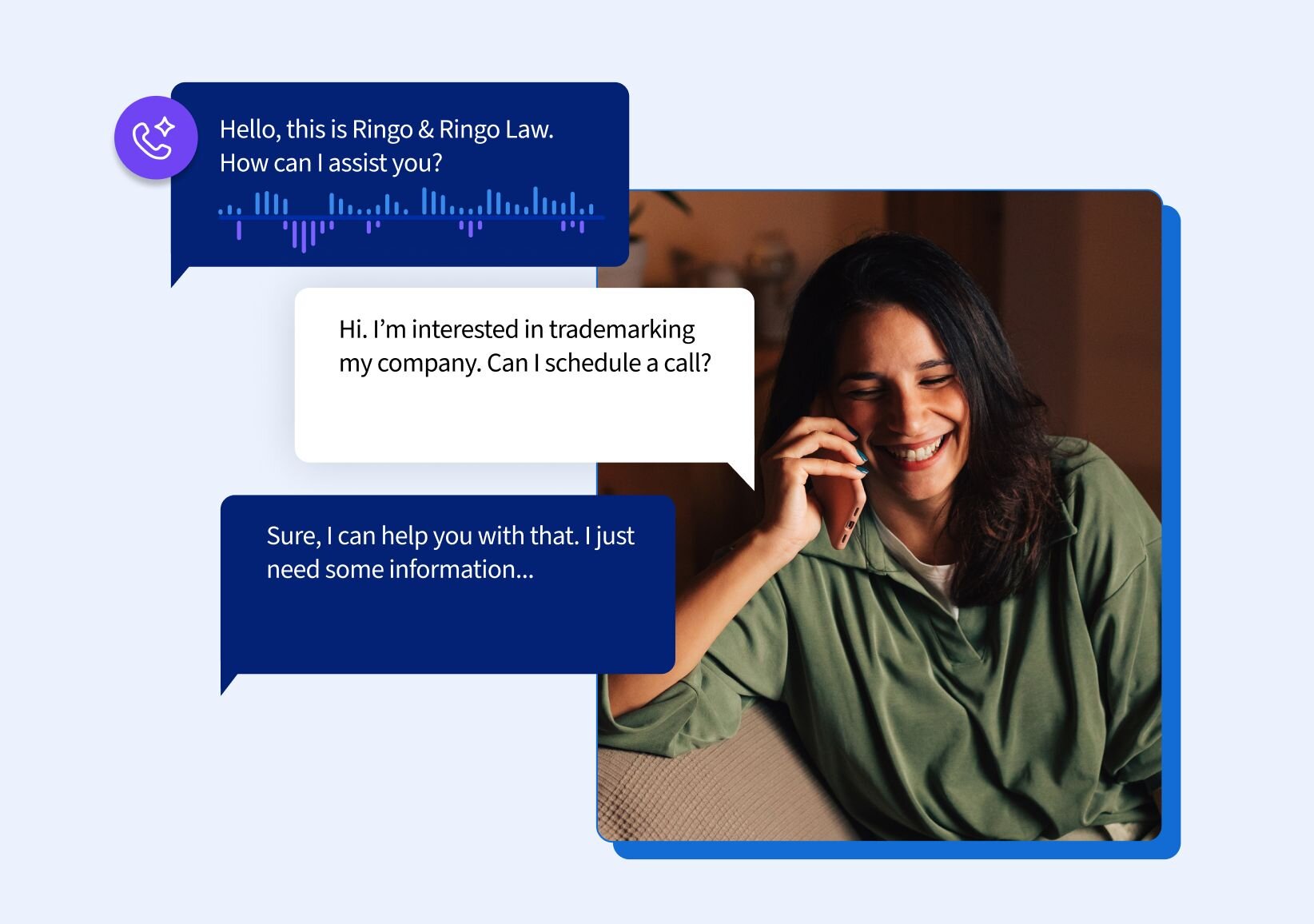Starting a cleaning business can be a lucrative venture, but to be successful, it's essential to implement an effective marketing strategy. With the right approach, you can attract new clients, maintain existing customer relationships, and build a solid reputation for your business. In this article, we will discuss various marketing strategies that can help you grow your cleaning business and stay ahead of the competition.
When marketing your cleaning business, it's crucial to establish a strong brand identity, develop a professional online presence, and actively engage with potential customers. Building a website, harnessing the power of social media, and employing targeted email and content marketing campaigns can generate new leads and increase client retention. Additionally, networking with local businesses and seeking client referrals can further boost your business's visibility within the community.
By carefully selecting and implementing the most suitable marketing strategies for your cleaning business, you can effectively reach your target audience and create a lasting impression. As a result, you will be better positioned to expand your client base, increase revenue, and ultimately achieve sustainable growth.
Understanding the market for cleaning businesses
Analyzing market trends and customer needs
To ensure the success of your cleaning business, it is crucial to understand the market trends and customer needs. Start by researching your competition and identifying the types of services they offer. This will help you to benchmark your offerings against your competitors. Analyze trends within the cleaning industry and observe how these trends correlate with consumer demands. For instance, you may notice a growing interest in eco-friendly cleaning solutions or an increase in demand for specialized cleaning services.
Keep track of demographic data, such as age, income, and location, as these factors can influence customer needs. Consider the following:
- Age: Different age groups may require various cleaning services; older clients might need more frequent or in-depth cleaning, while younger clients might prioritize affordability.
- Income: Clients with higher incomes may be more likely to request premium or specialized services.
- Location: Geographic location can impact the type of cleaning services needed due to factors like weather, local regulations, or cultural norms.
By examining these trends and customer needs, you can tailor your offerings to better serve your target audience.
Importance of customer feedback in shaping services
Customer feedback is a vital tool for shaping and improving your cleaning services. Actively seek input from your clients by conducting surveys, requesting reviews, or engaging them through social media. Use this information to identify strengths and weaknesses within your business, then address any issues and enhance your services accordingly.
Here are some ways to make the most of customer feedback:
- Encourage clients to share their experiences, positive or negative, on various platforms like Google, Facebook, or Yelp.
- Establish a feedback loop by responding promptly to client complaints or queries and monitor customer referrals to gauge overall satisfaction.
- Analyze patterns in the feedback. Are there recurring issues you can address? What aspects of the service do clients appreciate the most?
- Utilize feedback to implement changes and improvements in your services and communicate these updates to your customers.
By staying attentive to your client's needs and consistently refining your services based on their feedback, you can maintain a competitive edge in the cleaning business market.
Identifying your target audience
When starting or expanding a cleaning business, it's essential to recognize your target audience. This way, you can create relevant marketing strategies that connect with potential customers and yield better results. Here, we will explore three broad categories: Residential, Commercial, and Niche Sectors.
Residential
In the residential cleaning market, your customers will primarily consist of homeowners and renters. To serve this market effectively, you should understand their specific needs and preferences. For instance, consider whether they generally prefer one-time deep cleanings or regular, scheduled services. It may also be helpful to recognize changes in seasonality, as demand for cleaning services can increase during the spring and holiday seasons. Here are some factors to consider when targeting the residential market:
- Demographics: Identify the age, income, and family size of your target homeowners and renters.
- Location: Research the most densely populated areas or those with higher income levels.
- Schedule: Offer flexible options that cater to the varying work schedules and lifestyles of your customers.
Commercial
The commercial cleaning market encompasses a broad range of sectors, such as office spaces, retail stores, and educational institutions. These clients usually require routine janitorial services or specialized cleaning depending on their specific industry and location. To effectively target the commercial market, consider these aspects:
- Industry: Determine which industries are prevalent in your area, and focus on the ones with high cleaning needs, such as healthcare, retail, or food services.
- Client Size: Consider the size of the businesses you aim to target, as larger clients may require a more extensive range of services and specialized equipment.
- Contracts: Formulate contract proposals showcasing the value of your services, tailored to the needs of each specific sector.
Niche sectors
Exploring niche sectors can allow you to diversify your cleaning business and create a unique value proposition. Some examples of niche sectors are:
- Green/Eco-Friendly Cleaning: Cater to environmentally conscious clients by using eco-friendly products and practices.
- Post-Construction Cleaning: Offer specialized services to clean up construction sites once the job is complete.
- Window Cleaning: Provide professional window cleaning services to both residential and commercial properties.
By understanding your target audience in these three categories, you can tailor your marketing efforts to resonate with your ideal customers. Remember to showcase your cleaning services' unique features and benefits to stand out from the competition and attract new clients in the industry.
Building a strong brand identity
Elements of a compelling brand for a cleaning business
When crafting the identity of your cleaning business, several factors contribute to a compelling brand. These include:
- Mission and values: Clearly articulate your company's purpose and the core values that guide its operations.
- Unique Selling Proposition (USP): Identify what sets your business apart from competitors and highlight this in your messaging.
- Consistency: Ensure a uniform experience across all customer touchpoints, from your website to your service delivery.
- Visual elements: Design appealing logos, color schemes, and graphics that resonate with your target audience.
By addressing these core elements, you can create a strong brand identity that sets the foundation for an effective marketing strategy.
Brand identity creation
To build your brand identity, start by defining your target audience and understanding their needs and preferences. Reach out to potential clients, survey current customers, and analyze competitor strategies. Once you grasp your market, develop a coherent message that reflects your company's mission, values, and USP. Ensure all marketing materials, from brochures to social media campaigns, align with this messaging.
When creating your visual identity, consider factors such as color schemes, typography, and imagery. Keep your designs consistent across platforms to build brand recognition and trust. Review and update your brand identity periodically, as industry trends and customer preferences may evolve over time.
Tips for creating a memorable logo and company slogan
A striking logo and an engaging company slogan capture your brand essence in a glance. Here are some guidelines for designing these critical elements:
- Simplicity: Keep design elements clean and straightforward. A simple logo is memorable, versatile, and timeless.
- Originality: Avoid cliches and generic design elements. Strive for a unique design that distinguishes your cleaning business from competitors.
- Relevance: Ensure that your logo and slogan reflect your brand's mission, values, and target audience.
A well-designed logo and slogan help convey your brand identity and ensure that your cleaning company stands out in the market.
Leveraging the power of storytelling to connect with customers
Storytelling is a potent tool for building emotional connections with customers, evoking a sense of trust, and fostering long-term relationships. As a cleaning business, share stories that demonstrate the impact of your services on customers' lives, highlighting the before-and-after transformations brought about by your work.
Share testimonials, customer success stories, or anecdotes, and highlight your team's expertise through case studies and behind-the-scenes content. By weaving storytelling into your marketing strategy, you can create a unique and authentic brand identity that resonates with your target audience.
Developing an effective marketing plan
Research and data analysis
To create a successful marketing plan, you need to start by gathering data about your target market, competitors, and industry trends. Researching this information can reveal gaps in the market and inform your unique selling proposition. You can use various sources like online research and customer surveys to collect data.
- Online research: Look for industry reports, news, and articles to understand the overall market landscape.
- Customer surveys: Gather feedback from your existing customers to identify their needs and preferences.
- Competitor analysis: Examine the marketing strategies followed by your competition, and identify areas for improvement.
Brand identity creation
Your brand identity reflects your cleaning business's personality and values, and it helps customers differentiate your services from others. Consider the following aspects while creating a strong brand identity:
- Logo: Design a unique logo that represents your cleaning business.
- Color palette: Choose a distinct color scheme that conveys the essence of your brand.
- Typography: Select a font style that complements your logo and color palette.
- Tagline: Craft a memorable and compelling tagline that conveys your unique selling proposition.
Customer analysis
Understanding your target audience is crucial for tailoring your marketing strategies. Segment your customers into different groups based on their demographic, geographic, and behavioral characteristics. This could include:
- Demographic: Age, gender, income level, occupation, and education level.
- Geographic: Location, climate, and urban or rural settings.
- Behavioral: Needs, preferences, attitudes, and purchasing habits.
By analyzing these segments, you can create personalized marketing strategies that connect with each group more effectively.
Setting goals
A strong marketing plan involves setting specific, measurable, achievable, relevant, and time-bound (SMART) goals. Your objectives should be aligned with your cleaning business's growth and long-term success. Examples of goals for your cleaning business include:
- Increase customer acquisition by 20% over the next 6 months.
- Improve website traffic by 30% within the next quarter.
- Boost social media engagement by 15% by the end of the year.
Having clear goals helps you stay focused and measure the success of your marketing strategies, allowing you to adjust your approach as needed.
Digital marketing strategies
Search Engine Optimization
To improve your cleaning business's online visibility, start with search engine optimization (SEO). SEO involves optimizing your website's content and structure to rank higher on search engine results pages. Here are a few key elements to focus on:
- Keyword research: Identify relevant keywords that your audience is searching for.
- On-page optimization: Incorporate the keywords into your website's content, meta tags, and URL structure.
- Off-page optimization: Build quality backlinks from authoritative websites to boost your site's credibility.
- Technical SEO: Ensure your site's speed, mobile-friendliness, and overall performance are up to par.
Social Media Marketing
Establish a strong presence on social media channels such as Facebook, Twitter, Pinterest, LinkedIn, and YouTube to promote your cleaning business. Social media provides a platform to engage with your audience, showcase your services, and share valuable content. Keep these tips in mind when crafting your social media strategy:
- Regular posting: Share consistent content to keep your followers engaged.
- Visual appeal: Use eye-catching images and videos to captivate your audience.
- Interactive content: Run contests, ask questions, and encourage user-generated content.
- Customer service: Respond to customer inquiries promptly and showcase positive testimonials.
Email marketing
Utilize email marketing to stay in touch with your clients, upsell your services, and nurture leads. To run a successful email marketing campaign, follow these steps:
- Build a targeted email list: Collect emails from potential clients through your website, social media channels, or offline methods.
- Create engaging content: Design informative, appealing emails that provide value to your subscribers.
- Personalize your messages: Utilize segmentation to send tailored content to different customer groups based on their needs and preferences.
- Monitor and optimize: Track your email campaign's performance and adjust your strategy as needed.
Content marketing
Craft valuable content that addresses your target audience's questions, concerns, and needs. Effective content marketing can help establish your cleaning business as an industry expert and attract new clients. Here are some content types to consider:
- Blog posts: Share informative articles on cleaning tips, industry trends, or client success stories.
- Infographics: Create visually appealing graphics that convey complex information in an easily digestible format.
- Videos: Produce engaging video content showcasing your cleaning services or providing useful how-to guides.
- Ebooks and guides: Develop in-depth resources to further educate prospects on the cleaning industry and establish your business as a thought leader.
How CallRail helps cleaning businesses grow their bookings
As a cleaning business owner, it's important to optimize your marketing strategy, and one effective way to do that is by using call tracking software, like CallRail. CallRail provides valuable insights into where your calls come from and how to attribute them to successful marketing campaigns. By understanding which campaigns drive results, you can use your marketing budget more effectively and improve your business's overall performance.
Call tracking can not only enhance your marketing efforts but also improve customer service. With the data collected by software like CallRail, you can better understand your callers' needs and wants, ensuring a more tailored and satisfying experience for your customers. This results in higher customer retention and an increase in positive reviews for your cleaning business.
To get the most out of call tracking, it's essential to integrate the insights collected into your overall marketing strategy. Follow these steps:
- Identify successful campaigns: Analyze call data to determine which marketing campaigns generate the most leads and conversions for your cleaning business.
- Reallocate resources: Shift your marketing budget and resources towards high-performing campaigns and channels, boosting your return on investment (ROI).
- Refine targeting: Use the demographic and geographic data collected by the call tracking software to better target your local audience and improve your online presence, such as with a Google My Business page.
- Adjust messaging: Tailor your marketing messaging based on the information gathered from call tracking, enabling a more personalized communication approach with prospective clients.
Call Tracking
Call Tracking enables you to gain insights into how your marketing efforts are performing by associating phone call leads with specific ad campaigns, keywords, and channels. This helps you to:
- Optimize your advertising budget by identifying which campaigns are generating the most calls.
- Improve your marketing strategy by understanding which keywords and channels are attracting the most attention.
- Enhance your customer experience by determining the call source, allowing you to tailor your engagement to that customer's needs and preferences.
Premium Conversation Intelligence

Premium Conversation Intelligence provides an advanced level of call analysis, allowing you to gain deeper insights into the quality and outcomes of the calls your business receives. This helps your cleaning business by:
- Automatically transcribing and analyzing call data, highlighting important keywords and phrases.
- Identifying successful calls that lead to bookings, enabling you to focus on high-quality leads.
- Offering customizable reporting features and dashboards, allowing you to effortlessly visualize your call data and make informed decisions.
Form Tracking
Form Tracking enables you to increase your lead generation by tracking and evaluating the performance of your online forms. With this feature, you can:
- Identify which online forms are generating the most leads and conversions.
- Monitor the performance of your forms over time, helping you to make data-driven adjustments and improvements.
- Integrate your form data with your CallRail platform data, giving you a comprehensive view of your marketing performance.
Lead Center
Lead Center streamlines your customer communication by offering a centralized platform for all calls, texts, and form submissions. This enables your cleaning business to:
- Manage leads efficiently, prioritizing high-quality leads that are likely to result in bookings.
- Save time by centralizing all communication channels, making it easier to respond to customer inquiries.
- Improve customer satisfaction by enabling your team to more effectively manage communication and keep track of customer interactions.
By utilizing the full suite of CallRail tools, you can streamline your cleaning businesses marketing and communication efforts to maximize your bookings and grow your business.
By leveraging call tracking, you can make data-driven decisions that positively affect your cleaning business's marketing results. Remember to continuously analyze and update your strategy according to the latest insights, ensuring your cleaning business remains competitive and continues to grow in your local market.
Offline marketing strategies
Flyers and brochures
Flyers and brochures are a cost-effective way to spread the word about your cleaning business. You can distribute them in strategic locations like shopping centers, office buildings, and residential areas. Be sure to create eye-catching designs that highlight your services, expertise, and contact information. Use bullet points to list the key benefits of your services, and consider including testimonials from satisfied clients for added credibility.
Direct Mail Marketing
Direct mail marketing can be very effective, especially if you target households or businesses in specific areas. Create custom postcards or letters that clearly explain the benefits of hiring your cleaning services, and personalize them with the recipient's name and address. Offer incentives or promotions to encourage potential clients to give your business a try. Track the success of your direct mail campaigns by using a unique phone number or promotional code, so you can see which strategies generate the most leads.
Networking and partnerships
Building relationships with local businesses and individuals can be instrumental in your cleaning business' success. Attend local events, join chambers of commerce, and participate in trade shows to meet potential clients and partners. Forge strategic partnerships with complementary businesses, such as real estate agencies and property management companies, that can refer customers to your services. To make your networking efforts more productive, always bring plenty of business cards and be prepared with a brief pitch that highlights the unique selling points of your cleaning services.
Monitoring and evaluating your marketing strategy
Key Performance Indicators
To ensure the success of your marketing strategy, it's essential to establish and monitor Key Performance Indicators (KPIs). These are measurable factors that can help evaluate the success of your marketing efforts. Some of the most critical KPIs for a cleaning business might include the number of leads generated, conversion rate, retention rate, and revenue growth. Make sure to track and evaluate these KPIs periodically, allowing you to make data-driven decisions.
Customer feedback review
One of the most valuable resources in improving your marketing strategy is customer feedback. Regularly collecting and analyzing feedback from your clients helps you understand their needs, preferences, and satisfaction levels. Consider using tools like CallRail Call Tracking to monitor phone conversations, enabling you to analyze call data and gain insights into customer interactions. Incorporate this feedback to refine and optimize your marketing approach for better results.
- Conduct surveys
- Utilize online review platforms
- Record and analyze calls using CallRail call tracking
Adapting to changes
In today's ever-evolving market, it's crucial to stay adaptive and flexible with your marketing strategy. Keep an eye on industry trends, emerging technologies, and changes in customer behavior. By staying informed and proactive, you can refine your marketing practices and make necessary adjustments to stay ahead of the competition.
- Monitor industry trends and news
- Explore and adopt new marketing technologies
- Adjust your strategy according to customer behavior changes
With diligent monitoring and evaluation of your marketing strategy, you can ensure its effectiveness and growth for your cleaning business. Stay focused on your KPIs, gather valuable customer feedback, and adapt your approach to stay relevant and successful in the market.
Leveraging social proof and testimonials
Strategies for collecting and showcasing positive feedback
Collecting and showcasing positive feedback from customers is crucial in the cleaning business. Customer reviews and testimonials have the power to enhance your business's reputation and credibility. Here are a few strategies to obtain and display customer feedback:
- Ask satisfied customers for testimonials: Don't hesitate to reach out to your happy clients. Politely request them to share their experiences in a brief testimonial.
- Leverage social media: Encourage customers to rate and review your services on popular social media platforms. Positive reviews on your business’s social media profiles can significantly boost your reputation.
- Create a dedicated testimonials page: Compile all your reviews and testimonials on your website to highlight your customers' satisfaction effectively. This makes it easy for potential clients to discover the opinions of your current customers.
- Display reviews on marketing materials: Feature positive feedback on flyers, brochures, and other marketing materials to showcase the value your cleaning services provide.
Using case studies to demonstrate value and build trust
Creating case studies is an excellent way to showcase the impact of your cleaning services on real-life clients and situations. By presenting a thorough analysis of your services and the benefits clients experience, case studies can instill a sense of trust in potential customers. To create compelling case studies, follow these steps:
- Identify successful projects: Look for instances where your cleaning services provided significant value to a client, such as improving cleanliness, meeting tight deadlines, or solving unique challenges.
- Gather relevant data and metrics: Quantitative data, such as customer satisfaction scores and percentage increases in cleanliness, can provide a convincing argument for your cleaning business's effectiveness.
- Highlight the problem(s), your solution, and the result: Be concise and clear in explaining the issue your client faced, the cleaning service you provided, and the positive outcome they experienced because of your intervention. Be as specific as possible to lend credibility to your case study presentation.
- Enrich your case study content: Include relevant quotes from clients, eye-catching visuals, and any other information that showcases your expertise in the cleaning industry.
By leveraging social proof and testimonials, your cleaning business can effectively foster trust and confidence in your services. Incorporating these strategies and approaches will help you attract new customers and grow your business.
Referral programs and loyalty rewards
Designing an effective referral program for your cleaning business starts with identifying the right incentives to motivate your clients. Consider offering gifts or discount coupons for each successful referral, as recommended by ReferralRock. Think creatively and choose rewards that align with your customers' preferences. Make sure to clearly communicate the terms and conditions of the program to avoid any confusion.
Creating loyalty programs to retain existing customers is crucial in an industry driven by word-of-mouth. One approach is to waive a certain amount of your client's fee for every new customer they refer, as suggested by CMOnline. This not only builds loyalty with your current clients but also helps grow your business quickly. Another idea is to offer tiered rewards based on the number of referrals or repeat bookings.
Best practices for promoting referral and loyalty programs include:
- Leverage social media: Use your social media platforms to inform your customers about the program benefits and share success stories.
- Incorporate email marketing: Notify your clients via email, especially when you launch a new promotion or reward.
- Use in-person communication: Talk to your customers about the referral or loyalty programs during service visits to connect on a personal level.
Additionally, to measure the success of your referral and loyalty programs, track your ROI and new clientele. When you meet new clients, ask whether they were referred to your business. Keep a record of the person who referred them and analyze the data to optimize your programs further. By following these practices, you can implement referral and loyalty programs that help attract new customers and keep your existing ones coming back for more.
Conclusion
As we reach the end of this article, let's have a quick recap of the key marketing strategies for cleaning businesses. First, focus on creating a strong online presence by optimizing your website for search engines and engaging with customers through social media. Second, implement a referral program to encourage your satisfied customers to recommend your services to others. Lastly, leverage search engine marketing to improve your visibility and attract potential clients.
In the ever-changing business landscape, it's essential to encourage continuous innovation and adaptation in marketing. Keep exploring new ideas and stay updated with industry trends to stay ahead of the competition. This might include creating a unique selling proposition, partnering with complementary businesses, or running targeted local advertising campaigns.
CallRail is another vital tool to explore for your marketing efforts. It can help you gain valuable insights into the performance of your campaigns and make data-driven decisions. By integrating CallRail into your marketing strategy, you can stay informed about which channels are most effective for reaching your target audience and take well-informed steps to optimize your marketing campaigns accordingly.
You can use these strategies to propel your cleaning business to new heights. Keep refining your marketing efforts, stay innovative and adaptable, and you'll continue attracting new clients and growing your client base. Remember that the key to a successful marketing campaign is to continuously analyze, learn, and improve.









